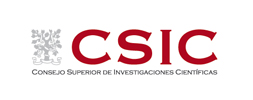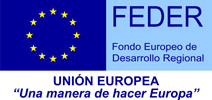de Lorenzo V.
 We live in times where image is everything. Today, a 2 year-old child
has seen orders of magnitude more images during his short life than the
founders of modern Science (Galileo, Newton, Mendel etc.) could have observed during their entire existence. The seminal text of modern genetics, Versuche über Pflanzen-Hybriden
by Gregor Mendel (1866) contains not a single illustration, merely
text, numbers and a few tables. Even the legendary 1953 Nature paper by
Watson and Crick on the structure of DNA has but one meagre
black-and-white sketch of the double helix. In contrast, attractive
coloured images are now a must in any respectable journal. It is easy to
understand why papers published in leading, and not so leading,
journals (in particular in the Life Sciences domain) are increasingly
filled with colourful, supposedly self-explanatory, figures. Customary
perusal of new issues of one's favourite journal most often starts by
randomly looking at the invariably ‘nice’ images. Publishers encourage
authors to submit coloured figures by decreasing – or just waiving –
production charges. Some journals even instruct contributors to produce a
graphical abstract to summarise the contents of the paper in
pictorial form, with the explicit purpose of capturing the attention of a
wider readership online. These days a text without images looks boring.
But one wonders whether all this increasingly picture-book science does
particular service to knowledge. One disadvantage of such practices is
the shift from an abstract, often demanding, way of thinking, to mere
visual reasoning. Since intelligence does not map to the visual cortex
of our brain, it seems a bit dangerous to overdo imagery as the main
support for a given conclusion in experimental science. The traditional
abuse of optical or electron microscopy pictures selected to document
biological phenomena (without proper statistics) has multiplied ad infinitum
in recent years, notably with the widespread use of GFP (green
fluorescent protein) and its multi-coloured variants. The most recent
literature is packed with examples where the beauty of the (visual)
result has obviously caused reviewers and readers to lower their guard
and take for granted phenomena that old-school molecular biology would
have subjected to fastidiously painstaking experimental verification.
Every scientist has a favourite horror story in which a handsome image
has led to a mistaken conclusion. The famous Bayer's adhesion sites that
appear in electron micrographs of thin sections of Escherichia coli,
and which were first claimed to explain inter-membrane protein
transmigration, were later demonstrated to be an artificial post-mortem
enhancement of streams of proteins. Beautiful biofilm architectures
revealed by GFP-labelled bacteria growing on a surface, and examined
with confocal laser microscopy, have been the subject of the most
extravagant interpretations, most of them probably wrong. Structures of
countless proteins have been proven erroneous after having been
published as beautiful 3D predictions. I have myself succumbed to the
lure of a good image by assigning a wrong function to a hole visible
with the electron microscope in the centre of a multi-protein complex in
bacterial auto-transporter proteins. Is there anything we can do to
counter our innate tendency to accept as right what we see, and importantly, what we see as beautiful?
In the Athens of the 4th century BC, a most attractive woman called
Phryne was taken to court accused of very serious crimes. When it seemed
that the verdict of the trial would be unfavourable, Phryne's advocate,
Hypereides, tore open Phryne's robe and displayed her naked, which so
impressed the judges that they set her free. The beauty of the image
caused the judges' critical spirit to desert them – surely a sign of
divine favour for Phryne in those times that lacked plastic surgery! Let
us celebrate the beauty that many new imaging techniques allow us to
extract from biological systems, but let us also be vigilant of the
erroneous interpretations that the same images may lead us to. The worst
fate of Biology would be to become a merely visual science rather than a
quantitative discipline. More numbers and fewer images, please! Perhaps
publishers should ask authors to produce a quantitative and
machine-readable summary of their papers rather than (or in addition to)
a graphical abstract. Aesthetics might lose, but knowledge would surely
win.
We live in times where image is everything. Today, a 2 year-old child
has seen orders of magnitude more images during his short life than the
founders of modern Science (Galileo, Newton, Mendel etc.) could have observed during their entire existence. The seminal text of modern genetics, Versuche über Pflanzen-Hybriden
by Gregor Mendel (1866) contains not a single illustration, merely
text, numbers and a few tables. Even the legendary 1953 Nature paper by
Watson and Crick on the structure of DNA has but one meagre
black-and-white sketch of the double helix. In contrast, attractive
coloured images are now a must in any respectable journal. It is easy to
understand why papers published in leading, and not so leading,
journals (in particular in the Life Sciences domain) are increasingly
filled with colourful, supposedly self-explanatory, figures. Customary
perusal of new issues of one's favourite journal most often starts by
randomly looking at the invariably ‘nice’ images. Publishers encourage
authors to submit coloured figures by decreasing – or just waiving –
production charges. Some journals even instruct contributors to produce a
graphical abstract to summarise the contents of the paper in
pictorial form, with the explicit purpose of capturing the attention of a
wider readership online. These days a text without images looks boring.
But one wonders whether all this increasingly picture-book science does
particular service to knowledge. One disadvantage of such practices is
the shift from an abstract, often demanding, way of thinking, to mere
visual reasoning. Since intelligence does not map to the visual cortex
of our brain, it seems a bit dangerous to overdo imagery as the main
support for a given conclusion in experimental science. The traditional
abuse of optical or electron microscopy pictures selected to document
biological phenomena (without proper statistics) has multiplied ad infinitum
in recent years, notably with the widespread use of GFP (green
fluorescent protein) and its multi-coloured variants. The most recent
literature is packed with examples where the beauty of the (visual)
result has obviously caused reviewers and readers to lower their guard
and take for granted phenomena that old-school molecular biology would
have subjected to fastidiously painstaking experimental verification.
Every scientist has a favourite horror story in which a handsome image
has led to a mistaken conclusion. The famous Bayer's adhesion sites that
appear in electron micrographs of thin sections of Escherichia coli,
and which were first claimed to explain inter-membrane protein
transmigration, were later demonstrated to be an artificial post-mortem
enhancement of streams of proteins. Beautiful biofilm architectures
revealed by GFP-labelled bacteria growing on a surface, and examined
with confocal laser microscopy, have been the subject of the most
extravagant interpretations, most of them probably wrong. Structures of
countless proteins have been proven erroneous after having been
published as beautiful 3D predictions. I have myself succumbed to the
lure of a good image by assigning a wrong function to a hole visible
with the electron microscope in the centre of a multi-protein complex in
bacterial auto-transporter proteins. Is there anything we can do to
counter our innate tendency to accept as right what we see, and importantly, what we see as beautiful?
In the Athens of the 4th century BC, a most attractive woman called
Phryne was taken to court accused of very serious crimes. When it seemed
that the verdict of the trial would be unfavourable, Phryne's advocate,
Hypereides, tore open Phryne's robe and displayed her naked, which so
impressed the judges that they set her free. The beauty of the image
caused the judges' critical spirit to desert them – surely a sign of
divine favour for Phryne in those times that lacked plastic surgery! Let
us celebrate the beauty that many new imaging techniques allow us to
extract from biological systems, but let us also be vigilant of the
erroneous interpretations that the same images may lead us to. The worst
fate of Biology would be to become a merely visual science rather than a
quantitative discipline. More numbers and fewer images, please! Perhaps
publishers should ask authors to produce a quantitative and
machine-readable summary of their papers rather than (or in addition to)
a graphical abstract. Aesthetics might lose, but knowledge would surely
win.




